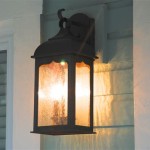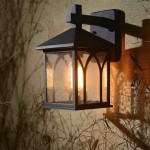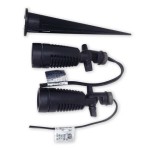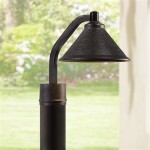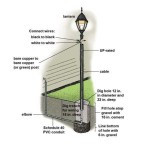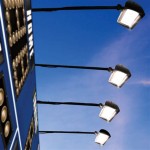How to Design and Install Outdoor Lighting
Outdoor lighting is an essential element for any home or commercial property. It enhances safety, security, and curb appeal, creating a welcoming and inviting atmosphere. Designing and installing outdoor lighting effectively requires a comprehensive approach, considering various factors such as functionality, aesthetics, and budget. This article will guide you through the process of designing and installing outdoor lighting.
1. Planning and Design
Before embarking on the installation process, careful planning and design are crucial. Begin by assessing your outdoor spaces and identifying areas that require lighting. Consider the purpose of each area, such as pathways, patios, gardens, and entrances. Next, determine the desired lighting effect, whether it's ambient, task, or accent lighting. Ambient lighting provides general illumination, task lighting illuminates specific areas for activities, and accent lighting highlights features like plants or sculptures.
Consider the following factors when designing your outdoor lighting scheme:
- Lighting fixtures: Choose fixtures that complement your home's style and architectural features. Consider materials, finishes, and sizes to ensure visual harmony.
- Light sources: Select light sources that provide the desired brightness and color temperature. LED bulbs are energy-efficient and have a longer lifespan compared to traditional incandescent bulbs.
- Placement: Strategically position fixtures to achieve the desired lighting effect. Consider the direction of light, shadows, and potential glare.
- Safety and security: Ensure adequate lighting in areas that require visibility for safety and security, such as pathways, entrances, and garages.
- Maintenance and accessibility: Choose fixtures that are easy to maintain and access for bulb replacements and cleaning.
2. Installation
Once the design is finalized, you can proceed with the installation process. This involves preparing the site, running electrical wiring, and mounting fixtures.
Here are steps involved in the installation process:
- Prepare the site: Clear the area where you will be installing the fixtures. This may involve removing vegetation, debris, or other obstructions.
- Run electrical wiring: For safety and code compliance, consult with a qualified electrician to run electrical wiring to the fixture locations. Ensure that the wiring is properly insulated and protected from weather elements.
- Mount fixtures: Install the fixtures securely using appropriate mounting hardware. Refer to the manufacturer's instructions for specific installation procedures.
- Connect wiring: Connect the electrical wiring to the fixtures, ensuring proper polarity and grounding. Consult a certified electrician if you are unsure about the wiring process.
- Test and adjust: Once the installation is complete, test the lights to ensure they are functioning correctly. Adjust the fixtures and light sources if necessary to achieve the desired lighting effect.
3. Maintenance and Troubleshooting
Outdoor lighting requires regular maintenance to ensure optimal performance and longevity. Here are some tips for maintaining and troubleshooting outdoor lighting:
- Clean fixtures regularly: Dust, dirt, and insects can accumulate on fixtures, reducing light output. Clean fixtures with a damp cloth and mild soap.
- Inspect wiring and connections: Periodically check for any damage or loose connections in the wiring and fixtures. Replace any damaged components promptly.
- Replace burnt-out bulbs: Replace bulbs promptly when they burn out. Consider using energy-efficient LED bulbs to reduce energy consumption and extend bulb lifespan.
- Check ground fault circuit interrupters (GFCIs): GFCIs are safety devices that protect against electrical shocks. Regularly test GFCIs in outdoor circuits to ensure proper functionality.
- Adjust lighting levels: As seasons change and daylight hours vary, adjust lighting levels to meet your needs. Use timers or motion sensors to optimize energy efficiency.
By following these guidelines, you can design and install outdoor lighting that enhances your property's safety, security, and aesthetics. Remember to prioritize safety and seek professional assistance for complex installations or electrical work. With careful planning, installation, and maintenance, your outdoor lighting will create a welcoming and inviting ambiance for years to come.

How To Install Your Own Outdoor Backyard Lighting My 100 Year Old Home

How To Install Your Own Outdoor Backyard Lighting My 100 Year Old Home

Install Landscape Lighting How To Design And In Your Yard

How To Install Outdoor Lighting Premier Of Md Dc Northern Va

How To Design And Install An Outdoor Lighting Set Up Billyoh Com

How To Design And Install Low Voltage Outdoor Lighting

How To Design And Install Low Voltage Outdoor Lighting Ron Hazelton

Install Landscape Lighting How To Design And In Your Yard

Install Landscape Lighting How To Design And In Your Yard

How To Buy Landscape Lighting Design And Install Your System Ideas Advice Lamps Plus
